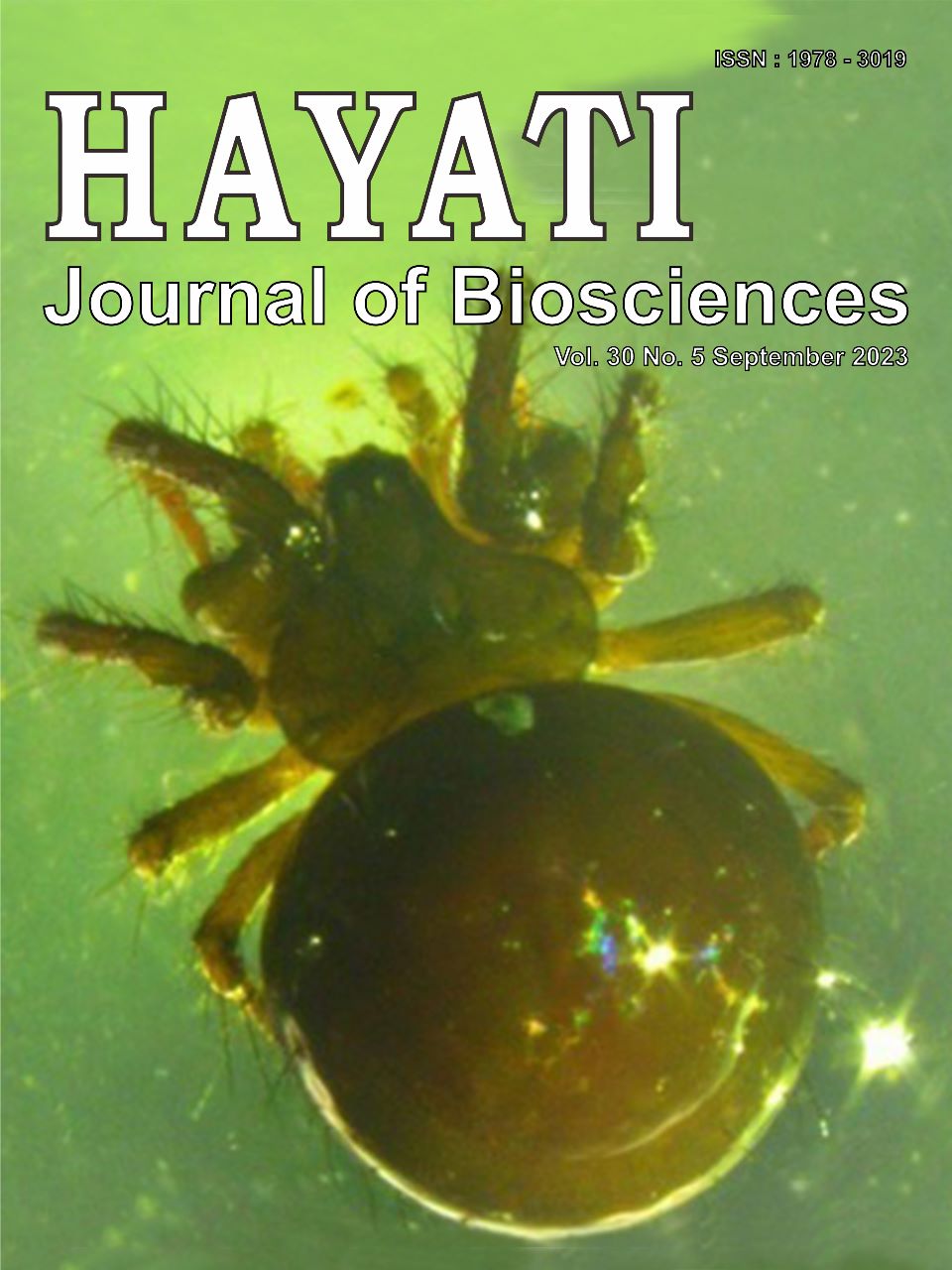Optimization of Biomass and Secondary Metabolite Production in Gynura procumbens (Lour.) Merr. Adventitious Roots Culture by Using the Method of Subculture and Fed-batch Cultivation in a Bioreactor
Abstract
The valuable extract of bioactive compounds from Gynura procumbens has been widely manufactured into various health products. The demand for these compounds is continuously increasing, but production through conventional farming methods is insufficient due to limited agricultural land and environmental stresses. An alternative to producing plant biomass is in vitro cultivation methods. This method requires less space and enables biomass propagation in a controlled condition that can facilitate stable and efficient production of plant secondary metabolites. This study evaluated the effect of inoculum subculture periods and culture methods on G. procumbens biomass and secondary metabolite production in a bioreactor. The 3-L airlift balloon type-bubble bioreactors was modified in this study to adopt the treatment of 1st-5th subculture periods and fed- and batch-cultivation strategies. We found the G. procumbens adventitious root culture was optimally derived from the 1st subculture produced biomass of 148.02±1.45 g FW and 8.59±0.12 g DW, and TPC (14.48±1.08 mg GAE/g DW) and TFC (116.89±0.44 mg KE/g DW and 33.97±0.13 mg QE/g DW). Additionally, the fed method after 28 days of culture using double distilled water replenishment improved adventitious root biomass (213.75±35.00 g FW and 11.21±0.18 g DW), while nutrient replenishment improved TFC (52.14±0.44 mg KE/g DW and 14.54±0.13 mg QE/g DW). These results can be used to optimize the cultivation of G. procumbens adventitious roots in a large-scale bioreactor.
Downloads
Copyright (c) 2023 Dannis Yuda Kusuma, Alfinda Novi Kristanti, Anjar Tri Wibowo, Boon Chin Tan, Yosephine Sri Wulan Manuhara

This work is licensed under a Creative Commons Attribution-NonCommercial 4.0 International License.
HAYATI J Biosci is an open access journal and the article's license is CC-BY-NC. This license lets others distribute, remix, tweak, and build upon author's work, as long as they credit the original creation. Authors retain copyright and grant the journal/publisher non exclusive publishing rights with the work simultaneously licensed under a https://creativecommons.org/

























.png) IPB University
IPB University Department of Biology
Department of Biology The Indonesian Biological Society
The Indonesian Biological Society 

